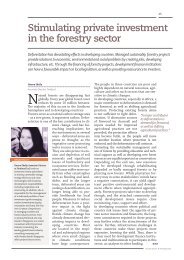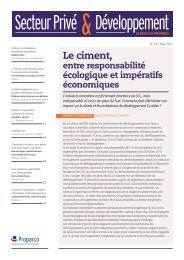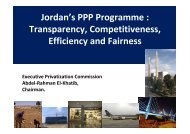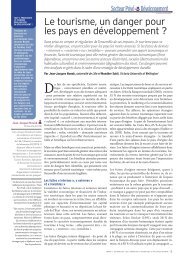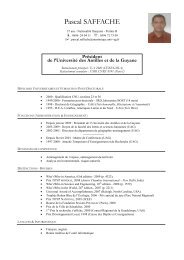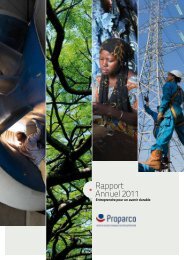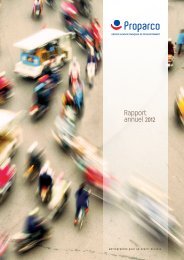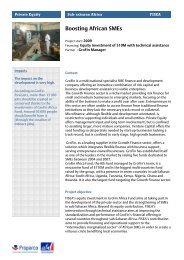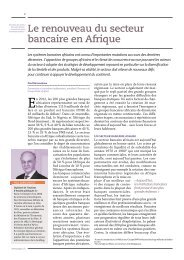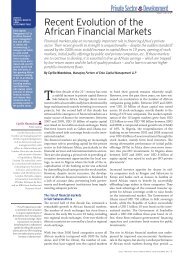Integrating Poor Populations in South African Cities - Agence ...
Integrating Poor Populations in South African Cities - Agence ...
Integrating Poor Populations in South African Cities - Agence ...
You also want an ePaper? Increase the reach of your titles
YUMPU automatically turns print PDFs into web optimized ePapers that Google loves.
Conclusion<br />
Nearly fifteen years ago, a new democratic government took the head of <strong>South</strong> Africa<br />
with its heavy legacy on the spatial and notably urban level. The public policies that have<br />
been conducted until now to provide urban solutions for disadvantaged populations<br />
have not managed to reverse apartheid’s separate development. The shape of large<br />
<strong>South</strong> <strong>African</strong> cities may seem worry<strong>in</strong>g <strong>in</strong> regard to the objectives of social cohesion.<br />
Some authors even go so far as to say that the post-apartheid policies have <strong>in</strong>creased<br />
the urban fragmentation apartheid created. As for the primary reasons for this failure,<br />
one must, among other th<strong>in</strong>gs, emphasize the lack of spatial plann<strong>in</strong>g, the sectoral<br />
approach to the delivery of services <strong>in</strong>clud<strong>in</strong>g hous<strong>in</strong>g, the limited <strong>in</strong>volvement of the<br />
state to control urban development, and f<strong>in</strong>ally the complexity of the relationships<br />
between the three spheres of government. In addition, the weakness of participatory<br />
mechanisms for projects <strong>in</strong>volv<strong>in</strong>g poor populations and above all the municipalities’<br />
difficulty carry<strong>in</strong>g the long-term urban development strategies to envisage for poor<br />
populations — not only the grant<strong>in</strong>g of decent hous<strong>in</strong>g, but rather functional settlements<br />
<strong>in</strong>tegrated <strong>in</strong> the urban fabric — are major handicaps.<br />
141<br />
Plann<strong>in</strong>g and restructur<strong>in</strong>g cities requires a long-term vision, and policies are<br />
cont<strong>in</strong>uously evolv<strong>in</strong>g. <strong>South</strong> Africa is a recently democratized society that has a vitality<br />
and spirit of <strong>in</strong>itiative aim<strong>in</strong>g to improve the situation for numerous poor households <strong>in</strong><br />
the cities. The lack of a national framework determ<strong>in</strong><strong>in</strong>g urban policies and the large<br />
role of the private sector <strong>in</strong> build<strong>in</strong>g the urban landscape have not prevented the<br />
emergence of very promis<strong>in</strong>g <strong>in</strong>itiatives. Several policies and projects build on what is<br />
already <strong>in</strong> place — multi-centre city, evolution of urban centrality <strong>in</strong> townships and<br />
<strong>in</strong>formal settlements — and seek to re-balance these settlements when it comes to<br />
urban facilities, transportation and sometimes jobs.<br />
© AFD 2009 <strong>Integrat<strong>in</strong>g</strong> <strong>Poor</strong> <strong>Populations</strong> <strong>in</strong> <strong>South</strong> <strong>African</strong> <strong>Cities</strong>



